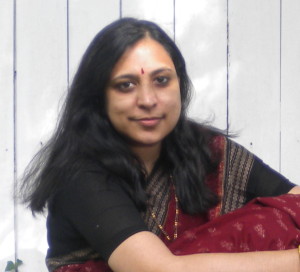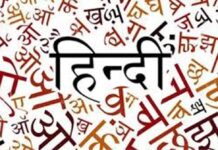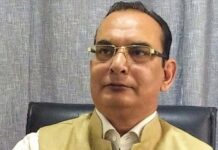By Anu Chitrapu
INDIA New England News Columnist
BELMONT, MA–To our American friends, all Indians may seem alike. When my kids were in elementary school one mom would confuse me with the only other Indian mom in the school. Till this day, I am not sure she knows there were two of us! The truth is that amongst us Indians, there are two very distinct groups – the North Indians and the South Indians.

For the North Indians, anyone living south of the Vindhyas is a Madrasi – not sure what Madrasi means because Madras is a very specific city in the state of Tamil Nadu. Similarly, to South Indians anyone north of the Vindhyas is a Bihari (yes, I have heard this from many South Indians) even if they lived in the eastern corner or western tip of the country!
North Indian food is significantly different from South Indian food. While rotis (bread) is the staple food in the North, rice has a pivotal place in the South. Funnily, it is the US that has created one version of Indian food! All Indian restaurants serve “curry” which is not even a dish by itself in India, chicken tikka masala and palak panneer – all of these dishes are from the North.
In fact, some dishes like Rogan Josh, I will admit, I had never even heard of growing up in the South. I was quite taken aback when an American friend of mine asked me to make Rogan Josh for him! Of course once I knew it was a lamb dish there was no way I would make it. A lot of South Indians are vegetarian (or at least the parents in India think so), so dishes like Chicken Tikka Masala are Indian dishes that a lot of South Indians discovered in America. Nothing like learning about Indian cuisine in the US!
As for accents, I blame the South Indian languages for missing certain letters in the alphabet, thereby making it very difficult for them to pronounce certain words. Like Mahatma Gandhi is referred to as Magatma Gandhi by some South Indians and don’t blame them, the problem is there is no “HA” in languages like pure Tamil so one is forced to spell Mahatma as Magatma! Similary some North Indians say “eessnake” for snake. And no the eess is not the hissing of the snake, just the fact that in their Indian language there is an “e” in front of words starting with the sound “sa”. But here in Boston we all speak a version of Boston-Indian-English.
Then there is the tickly subject of facial hair. Let me just say that for most Indians (and I mean the men. JEEZ!) Corporate America manages to make the ‘stash disappear in a flash!
Next we come to the controversial topic of dress. Not generalizing, but generally speaking South Indians don’t pay too much attention to dress. For them it is all about eating rasam and yogurt rice and doing well at academics. Most South Indians would want to get centum (love that word) in every Math exam they ever take. While they would win the Math contests, they would probably not be the first ones to come to mind when you think glamour.
The glamour market is captured by North Indians who don’t get distracted by quantum physics or calculus. Instead they focus on the lovely clothing and jewelry which gives Bollywood its name. South Indians mostly stick to traditional, muted silk that definitely spells elegant but is not considered to be the top choice on the glamour hierarchy. Again, once in the US, we all dress somewhat similarly. Here in Boston there are now several stores and vendors selling beautiful Indian clothes and North and South Indians alike come to parties dressed in the latest Bollywood fashions.
Isn’t it amazing that right here, in the melting pot called Boston, we have found a common cuisine and a common dress? In India, North may be North and South may be South but here the twain has met.
















I between north and south
The Gujarati Maharastrians and Rajasthanis gets crushed
Not north or south
In between
All believe in same heritage and culture
Enjoy rice
Enjoy thick bread. Paratha
Enjoy purée and sweets in between
Dinesh
A good general observations by Ms. Chitrapu. Thanks. But I also agree with Dinesh who rightly points out that many other kinds of Indians get forgotten in this binary division of north and south. For example, what about the Eastern and Western states and their distinctive cultural habits? The Bengali and Assamese food and attitudes can be quite different from the all encompassing ‘North’ and ‘South’ However, I must say it’s true that the Eastern states have their stereotypes about South and even North although they are considered part of northern culture by the South! Sometimes people from the rest of the country use Calcutta or Kolkata as the yardstick to refer to anything east of Madras. No wonder the people in Assam take objections to that. As for food, the staple in the East is definitely rice and fish (in Bengal) even though south Indian Dosa and milk coffee are big favorites of Calcutta population. I agree with the author about the restaurants in the US making chicken tikka masala and panir saag emblematic of Indian cuisine. Oh well, most Indians – Bengali or Bihari – while eating out at the Indian restaurants owned mostly by the Punjabis may even relish the two items mentioned above. It all depends where we live and what’s available. Cultural behavior of one group changes because of the same reasons and finally a melting pot gets formed. However, we cannot blame the ones who remain faithful to their native food because it’s also the “comfort food.”
Not sure what you mean by “our American friends” as American is a nationality and can be of any ethnic origin including Indian. If you have permanent citizenship or possibly your very children who may have been born here then you would be considered “American.” I find it somewhat simplistic to divide a diverse country such as India, culturally just into two regions (north/south), when there are swats of regions west and east (7 sister states) as well as central that are quite unique and distinct culturally. Also your assertion that many South Indians are vegetarians and would be clueless to dishes such as Rogan Josh though might be true in specific cases, don’t believe it to be a generalization of all South Indians. On a sub-regional basis you have a state like Kerala in the south (50% Muslim/Christian) which is the one of few state where beef production/consumption is legal and non-vegetarian dishes are integral part of cuisine (i.e malabar beef biryani) as well and other regions in the south such as Hyderabad where the local dishes such as haleem, kheema and the famed Hyderabadi Dum biryani made with chicken, lamb, goat, etc… is not only a iconic cuisine locally but nationally and sub-regionally. So I’m not sure that “South Indians” as a whole would be less vegetarian proportionally compared to “north indian” counterparts or even less aware of certain dishes. As for dress not sure South Indians as a whole can be generalized to plain dress due to their diet consisting of mostly perugu and rasam and academic focus which seems to be a loose rationale. I understand this is an opinionated editorial piece and appreciate the initiative delving into the cultural diversity of a population group, but ultimately the title “Only Two Types of Indians” seems more like a bold statement of fact then an opinion.
This the 1st time ever I have ventured to read a write up in INE.
I find it very simplistic and shallow.
Anu’s article is actually funny, but if you have not lived in India, you won’t know which end is up in that article. You, fortunately, have not experienced the Madrasi-nonMadrasi divide. Maharashtrians would get visibly upset if anybody called them “South Indian” because even if all of Maharashtra is south of the Vindhyas, Maharashtrians came from the North Pole which is north of the Vindhyas (in case you did not know that). I grew up in Bombay (not Mumbai in those days) and lived through this. what I am talking about. If you were lucky you were called “undo gundu”. gundu is a Tamil word meaning “fat”; “undo” is, who knows, what. But “undo gundu” clearly means “cancel the fat”, which was a prescient way to refer to our modern preoccupation with fat.
So, you may think it is a superficial analysis, but to a major extent the belief about “Madrasis” is true all over the north. And not even the north — Hyderabadis who spoke only Urdu considered themselves non-Madrasis. They had a weak point prior to Independence, as Hyderabad was part of the Nawabi state and the rest of Andhra Pradesh was part of the Madras Presidency.
When I first came to IIT/Kanpur, I had these strange people (I mean students from Hyderabad) come up to me and say “something something Rundi”. Then they would laugh having just cracked a very funny joke. It took me a couple of months before somebody explained to me that in TELUGU, the phrase I could not understand was a greeting of some kind. It turns out that Rundi means something else in Hindi.
Also, when I came to IIT/K, the standard reference to people from the south was “sala southie”. There was no point getting upset, but say “sala northie” and somebody was bound to get upset, especially if you were actually talking to them when you said it. They wanted no part of that relationship.
Now this “put down the mridangam” (with apologies to Sesame Street) attitude applied to others as well. “Ghatis” were, well, from the “ghats” — half of India, you might think, but it only applied to Marathi speakers. If you actually called somebody a “ghati” in Bombay in those days, the Shiv Sena may have come and killed you and it was NOT a defense to say that “he called me ‘Madrasi’ first” — the Shiv Sena have/had a strong sense of Justice, and being ghatis and all that, they used to express it loud and clear.
Now, being a Southie was not all nails and snails – you were also a math genius and got invited to sit next to them during tests. This was where being obtuse as a Southie helped.
nicely balanced to not really offend any one group! Nice to read.
Stereotyping is never a healthy thing.
Nice write-up Anu. I have been asked whether I speak Indian at home. Told him no, never heard of it.
Nicely done. I am a Gujarati raised in the South. Can relate to the observations. It is meant to be funny not sure why some of the comments are so serious. Write something better if you can.